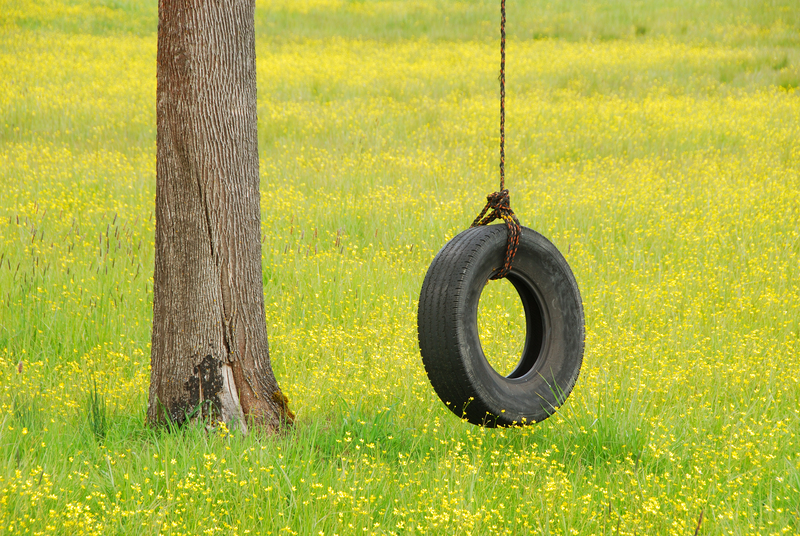Tackling the Chaos: Strategies for Clutter Removal and Hoarder Help
Unmanaged clutter can cause overwhelming chaos both physically and emotionally. Whether you or someone you care about is struggling with hoarding, understanding effective clutter removal strategies and how to provide productive hoarder help is essential. In this comprehensive guide, we'll explore various approaches to regaining control, improving quality of life, and restoring peace of mind in any environment challenged by excess belongings.
- Understanding Clutter and Hoarding
- Why Is Clutter Removal So Important?
- Spotting the Early Signs of Hoarding
- Developing an Action Plan for Decluttering
- Step-By-Step Clutter Removal Strategies
- Offering Hoarder Help: Compassionate Support Methods
- When to Seek Professional Clutter Removal Help
- Maintaining a Clutter-Free Environment
- Frequently Asked Questions
Understanding Clutter and Hoarding
Before implementing clutter removal tactics, it's essential to understand the difference between clutter and hoarding disorder. Clutter refers to the accumulation of items that are disorganized, unneeded, or create barriers to productive living. Hoarding, on the other hand, is a complex psychological condition characterized by the persistent difficulty to discard possessions, regardless of their value.
What Causes Clutter and Hoarding?
There are several underlying causes for both behaviors:
- Emotional attachment to items due to memories or nostalgia
- Fear of future need
- Depression, anxiety, or other mental health issues
- Lack of organizational systems
- Challenging life transitions such as loss, divorce, or aging
*Realizing whether you are simply overwhelmed by clutter, or whether you or a loved one requires specific hoarder support*, is the first step toward recovery.
Why Is Clutter Removal So Important?
The benefits of decluttering reach far beyond aesthetics. A home clear of excess possessions promotes:
- Physical safety - Reduces trips, falls, and fire hazards
- Better hygiene and health
- Improved mental well-being - Less stress, anxiety, and depression
- Elevated productivity
- Enhanced relationships - Less embarrassment and isolation
For stubborn or severe cases, clutter removal help can literally be life-changing.
Spotting the Early Signs of Hoarding
Hoarding can develop gradually. Recognizing signs early can help you implement more effective clutter control and get the right hoarder help before the situation worsens.
- Persistent difficulty discarding possessions
- Accumulation that restricts living space
- Strong distress at the thought of discarding items
- Attempts to "organize" rather than let go
- Social withdrawal or avoidance of visitors
If several of these signs are present, professional intervention may be warranted.
Developing an Action Plan for Decluttering
Without a structured plan, the process can quickly turn frustrating and ineffective. Here's a proven strategy for tackling clutter:
- Set realistic goals: Identify areas most in need of attention and establish a timeline.
- Recruit support: Enlist friends, family, or professional clutter removal services if needed.
- Gather resources: Boxes, bags, labels, cleaning supplies, and protective gear.
- Create sorting categories: Keep, Donate, Sell, Recycle, and Trash.
Structure is the key to success, especially when offering hoarder help.
Step-By-Step Clutter Removal Strategies
Ready to take back control? Follow these practical steps for effective decluttering and hoarder support.
1. Start Small and Celebrate Progress
Tackling clutter can feel overwhelming. Begin with a manageable area, such as a single drawer or shelf. Every cleared space is a victory. Set aside a dedicated time each day or week.
2. Employ the Four-Box Method
- Keep: Only items that are truly necessary or bring happiness
- Donate/Sell: Gently used items others could enjoy
- Recycle: Paper, plastics, or items that can be reused responsibly
- Trash: Broken, outdated, or unusable items
3. Set Emotional Boundaries
Many people struggle with letting go of items for emotional reasons. Give yourself (or the hoarder you're helping) permission to discard possessions that no longer serve a purpose. If needed, take a photo of the item for memories before parting with it.
4. Avoid the "Maybe" Pile
Indecision can sabotage momentum. Use the "maybe" category sparingly. If you must use it, set a rule: items in the "maybe" box must be sorted at the end of the session.
5. Clean as You Go
As each area is cleared, wipe down surfaces, vacuum carpets, and open windows to freshen the space. This adds instant reward and motivation.
6. Practice the "One-In, One-Out" Rule
To prevent future clutter accumulation, adopt the habit of removing an old item whenever a new one is brought into the home.
Offering Hoarder Help: Compassionate Support Methods
Hoarding is a sensitive issue. Here's how to provide effective and compassionate hoarder help:
- Listen without judgment: Avoid criticism and express empathy.
- Be patient: Progress may be slow; celebrate even minor improvements.
- Encourage professional help: Therapy and support groups specifically for hoarders can offer life-changing breakthroughs.
- Focus on safety: Remove items that block exits, create trip hazards, or harbor pests.
- Respect boundaries: Never throw away items without consent.
*Remember: the goal is not just a clean house, but also an improved sense of well-being and dignity.*
When to Seek Professional Clutter Removal Help
Sometimes, clutter and hoarding require outside intervention. Signs it's time to call in clutter removal experts:
- Health or safety risks (mold, pests, blocked exits)
- Severe emotional distress or resistance to change
- Legal or tenancy issues
- Family conflict or social isolation
Professional services may include therapists, organizers, specialized hoarder cleaning services, and support groups. Many companies offer confidential, nonjudgmental assistance tailored to hoarders' unique needs.
Maintaining a Clutter-Free Environment
Clearing clutter is just the beginning. Sustain progress using these strategies:
- Weekly maintenance: Set aside time each week to tidy up.
- Implement organizational systems: Every item should have a designated home.
- Stay mindful of acquisitions: Shop thoughtfully and avoid impulse purchases.
- Use reminders and checklists to stay accountable.
- Continue therapy or support group participation if needed.
Remember, progress over perfection. Celebrate milestones and embrace setbacks as learning opportunities.
Frequently Asked Questions
What is the first step in clutter removal for hoarders?
Education and open communication. Understand hoarding as a mental health issue. Begin with small areas and set achievable goals.
How do I convince a loved one they need hoarder help?
Approach with empathy and avoid ultimatums. Share accurate information about the impact of clutter and offer support in finding help.
Are there local resources for professional clutter removal?
Yes! Look for specialized hoarder cleaning services, mental health professionals, and community support groups. Many cities have dedicated resources for those seeking clutter control assistance.
Is decluttering ever a "one-time" job?
Rarely. Maintaining a clutter-free home requires ongoing mindfulness and the adoption of new habits. Regular reviews prevent relapse.
Conclusion: Take Back Control from the Chaos
Embarking on the journey of clutter removal and hoarder help is both challenging and rewarding. With the right mindset, supportive strategies, and--if necessary--professional assistance, anyone can transform a chaotic environment into a safe, organized, and peaceful space. Remember, you're not alone. Every small step makes a powerful difference. Start today, and witness the positive transformation in every aspect of your life.

